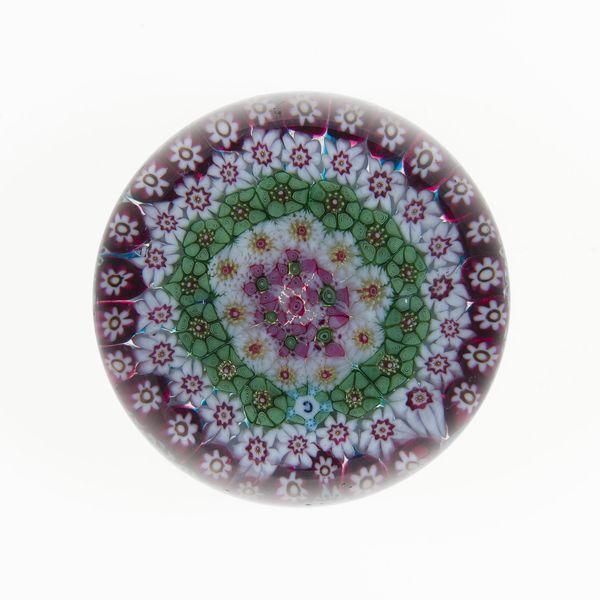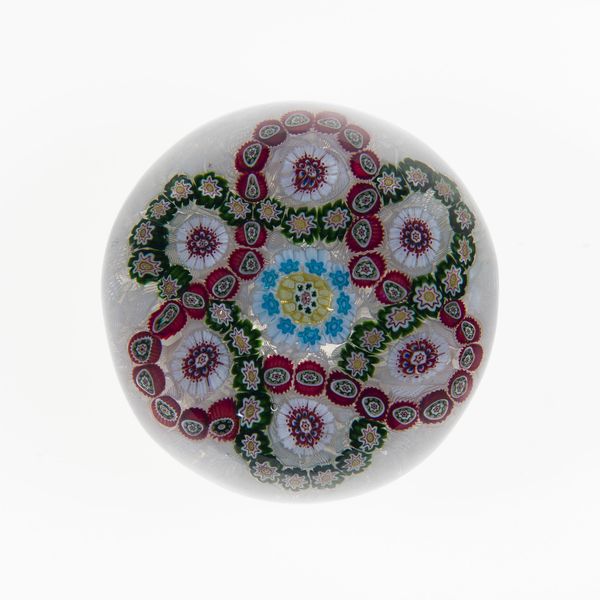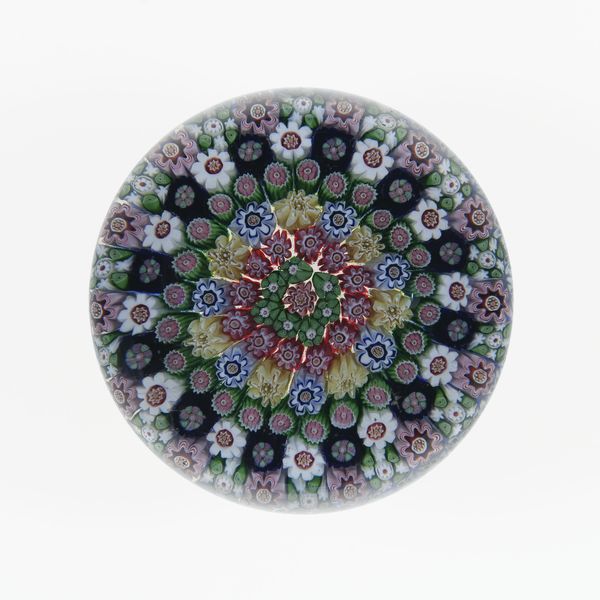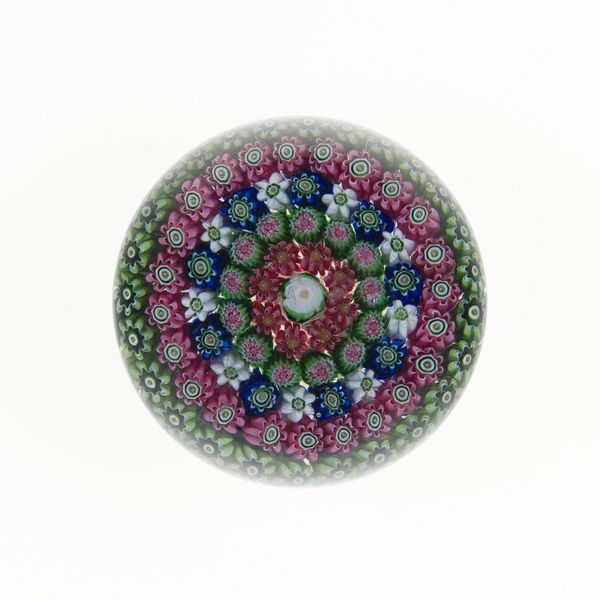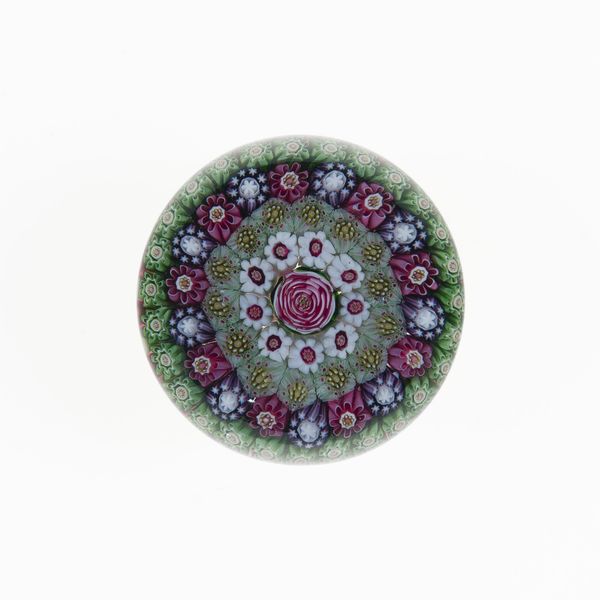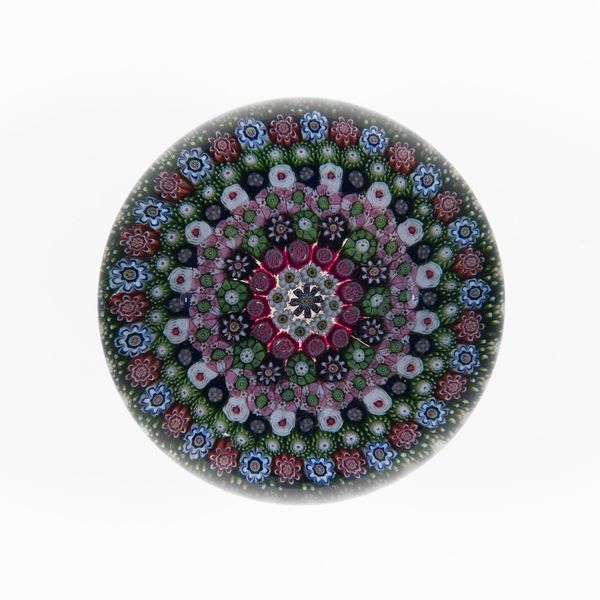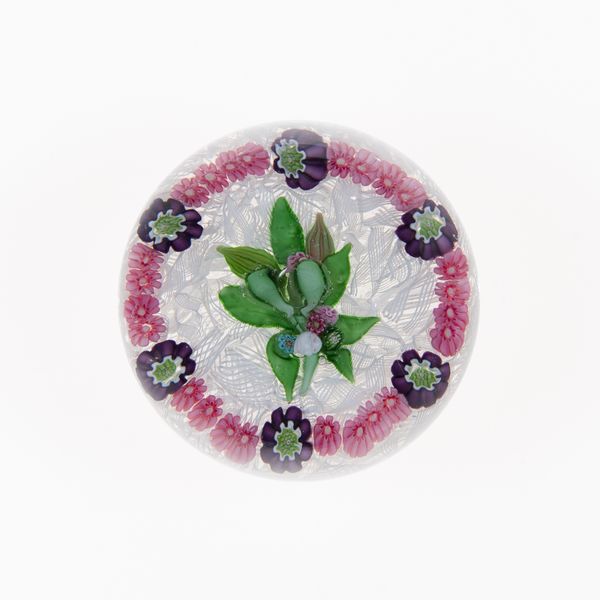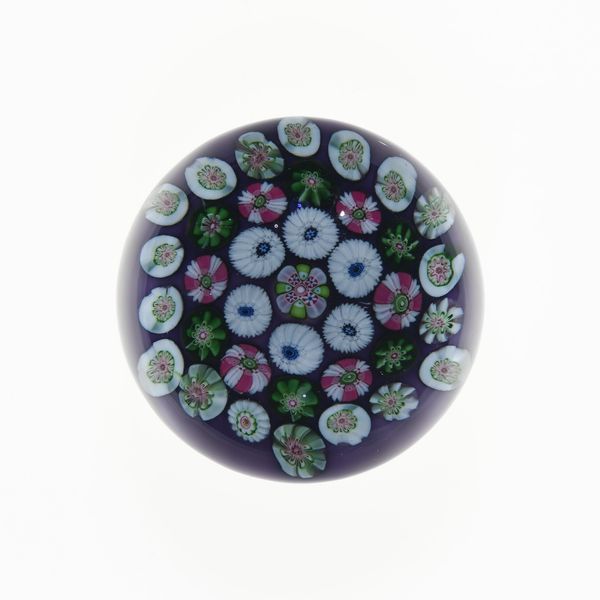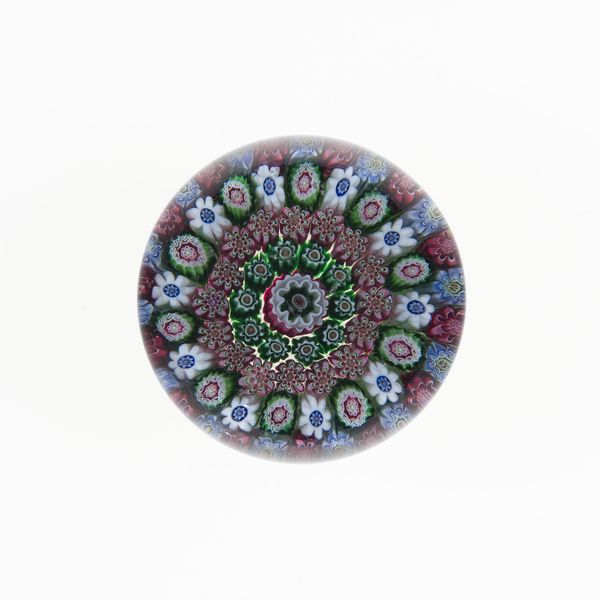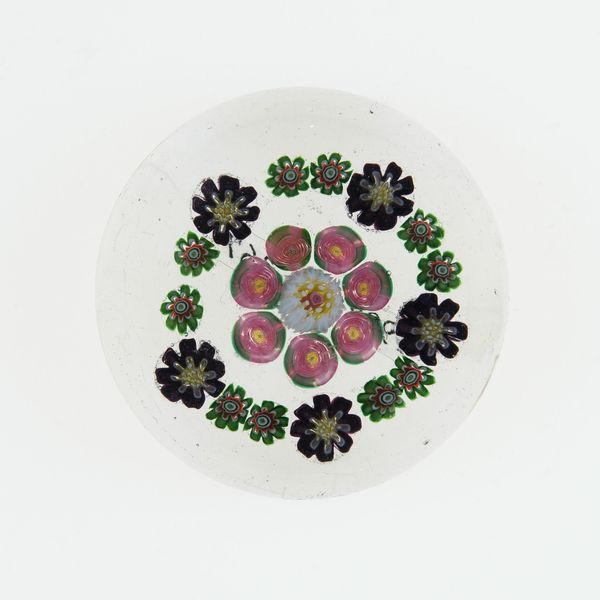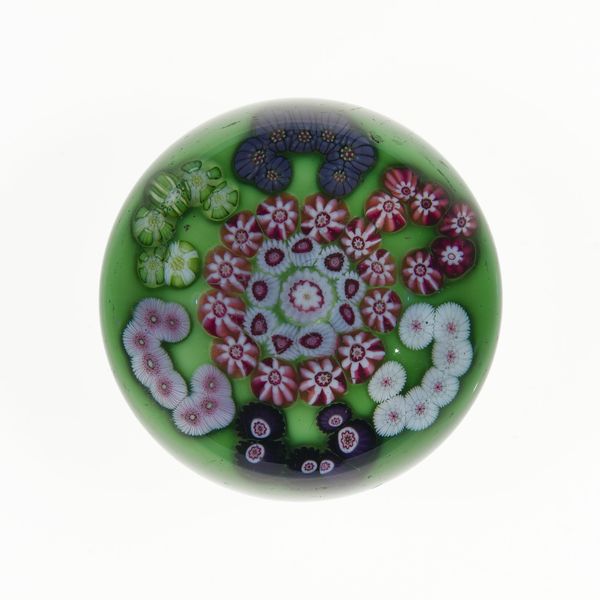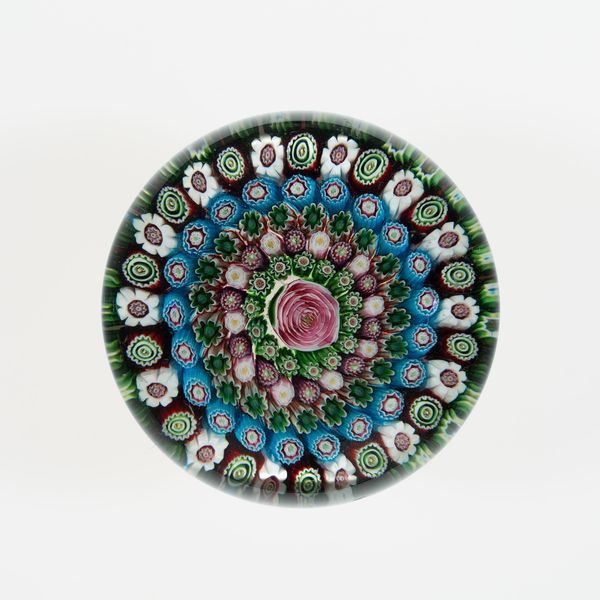
paper, glass
#
naturalistic pattern
#
organic
#
paper
#
glass
#
organic pattern
#
flower pattern
#
decorative-art
Dimensions: Diam. 7.9 cm (3 1/8 in.)
Copyright: Public Domain
Curator: This is a nineteenth-century paperweight from the Clichy Glasshouse, a renowned manufacturer of glass art. The artistry is so compelling. Editor: It is captivating. There's something simultaneously calming and disorienting about being caught in its orbit, as if peering into another world where nature has been hyper-stylized. Curator: Exactly! Notice how the artist crafted the floral patterns. They achieved the organic, almost naturalistic pattern from tiny, prefabricated glass canes known as millefiori. The arrangement speaks to a mastery over materials. Consider the labour: meticulously assembling those elements, understanding the way the glass will behave under heat. Editor: It makes you wonder about the role of the anonymous artisans, and where the cultural value was placed. It is displayed in The Art Institute of Chicago now, but for what purposes did the glasshouse workers craft them then, and who purchased and collected such objects? Curator: Paperweights such as this became symbols of middle-class aspiration. A simple domestic item elevated into something exquisite, showcasing taste and refinement. You have to admire the way Clichy Glasshouse elevated everyday object making to a fine art. The materiality alone— the clarity of the glass, the vibrant colors — testifies to an investment in the highest quality materials. Editor: Though that pursuit of "quality" always exists within the frame of class and consumerism, right? In many ways this encapsulates Victorian ideals around control and miniaturization of the natural world for domestic pleasure and for the display of personal "taste." The flowers, abstracted but recognisably floral, feel like nature safely contained and commodified. Curator: I appreciate that perspective. It helps one really contextualize how the item connects to broader social movements of the time. It is, in a very literal sense, encapsulated history. Editor: Precisely. It offers such a potent microcosm. Thinking through its construction alongside its original setting gives such dimension to the piece. Curator: Thank you, this new perspective makes it feel less like a trinket and more like an artefact now. Editor: It’s all about context, I believe. Examining what we think we know and questioning those givens opens it all up.
Comments
No comments
Be the first to comment and join the conversation on the ultimate creative platform.
